ENIAC, a pioneering of computers
Enrique Osset Vicente
ENIAC is the acronym for Electronic Numerical Integrator and Computer. It was one assignment of the ballistic lab USA with Moore School of Philadelphia. The chief engineer was J. Presper Eckert and the consulting engineer was John W. Mauchly. ENIAC was finished in 1945 and in 1947, it was moved to Aberdeen test area where it was modified for its improvement. In 1955, it was not active anymore. ENIAC was important to define the architecture of modern computers or the von Neumann architecture.
Video of ENIAC working.
Our gratitude to Footage file.
The structure of the ENIAC was 27 tones and it was made of 40 components of 0.6 meters wide for 2.7 high and 0.7 deep. They were placed in U and it took up one 10×17 meters room. It needed some cooling because it consumed 174kw. It was built with 17.468 vacuum tube, a state-of-the-art technology in the 40s.
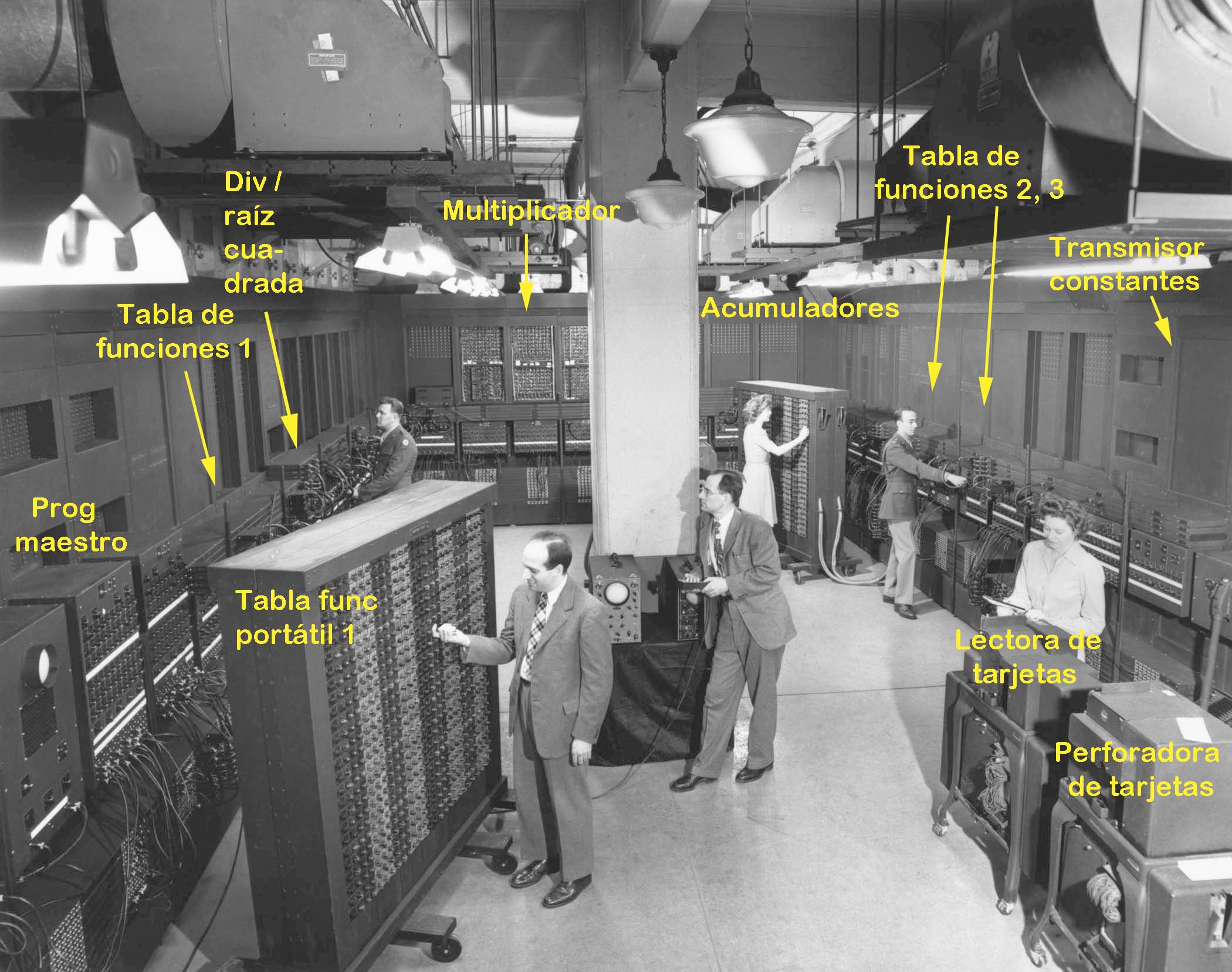 |
|
It was a computer for a general purpose and it was able to solve various problems like differential calculus and integral. It consisted of 20 adder accumulators, a multiplier and a square root divider. Also, it had one master programmer, more than one only lecture intern memory of 312 numbers and another extern memory made by keypunch which could read and print.
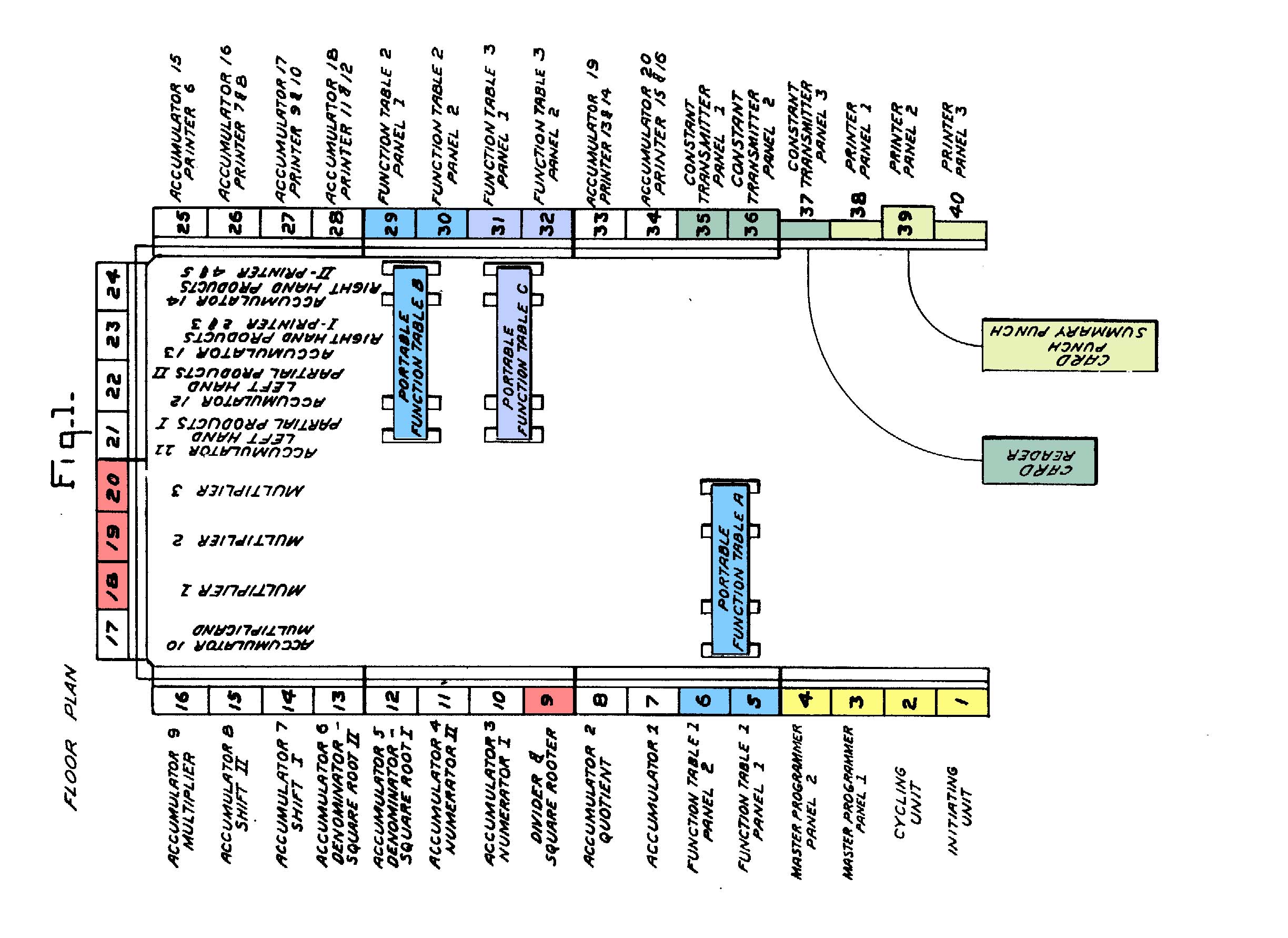 |
|
The ENIAC did not have operative system or storage program. It was managed by six programmers, connecting the modules through multi-wired cables and putting the switch in the right positions. That allowed it to link calculations and to pass data from one module to the other.
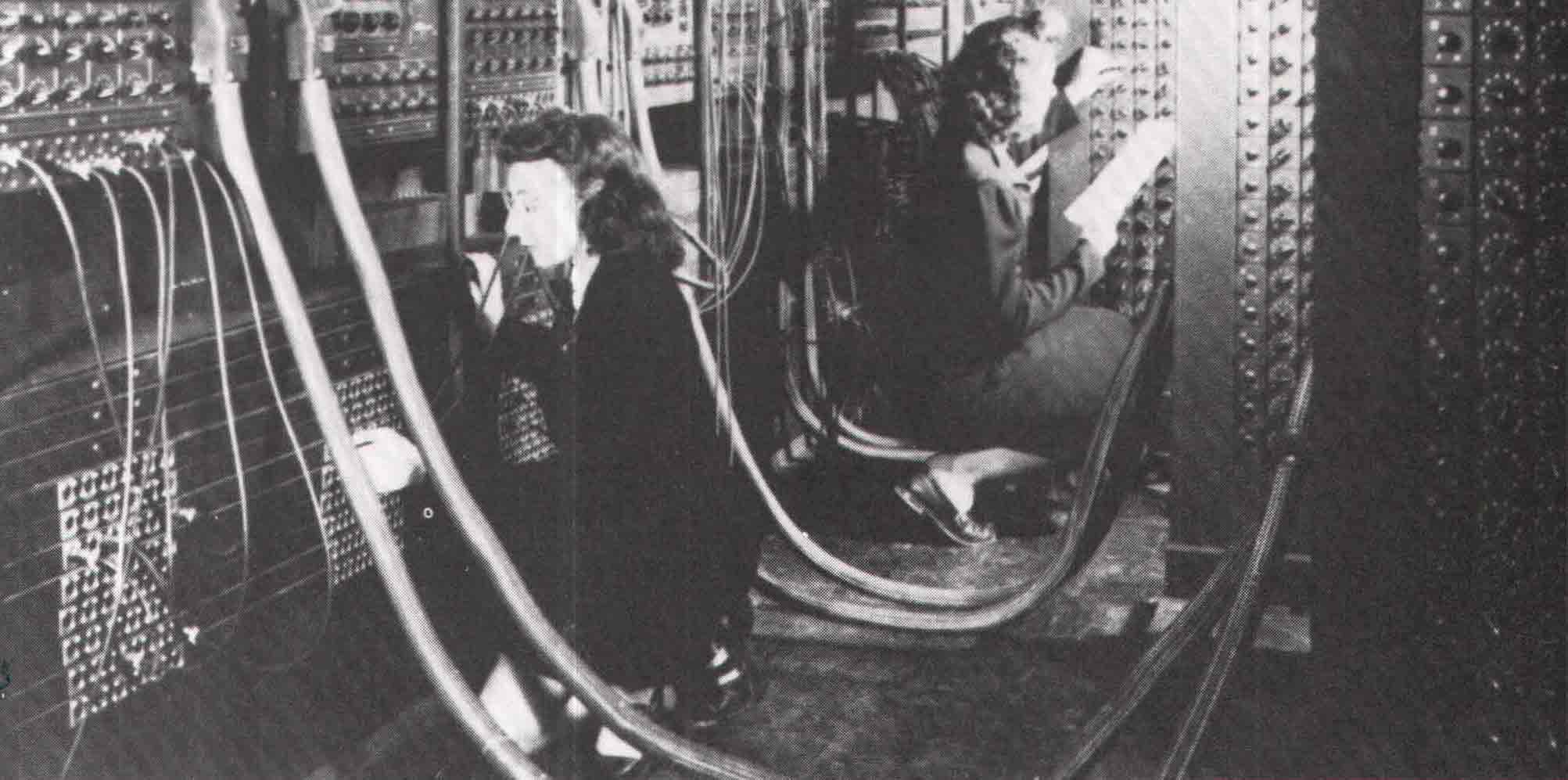 |
|
Those computers just stored the numbers that were used in its operations. Due to technical reasons of the moment, ENIAC used the decimal numbering system instead of the current binary one; and it could manage numbers up to 20 digits. With ENIAC it were made from artillery tables to complex physicist calculations regarding the hydrogen bomb. It was a landmark of the starting of current computers, a significant link in the beginning of the computing evolution. The current computers architecture was defined by its construction.
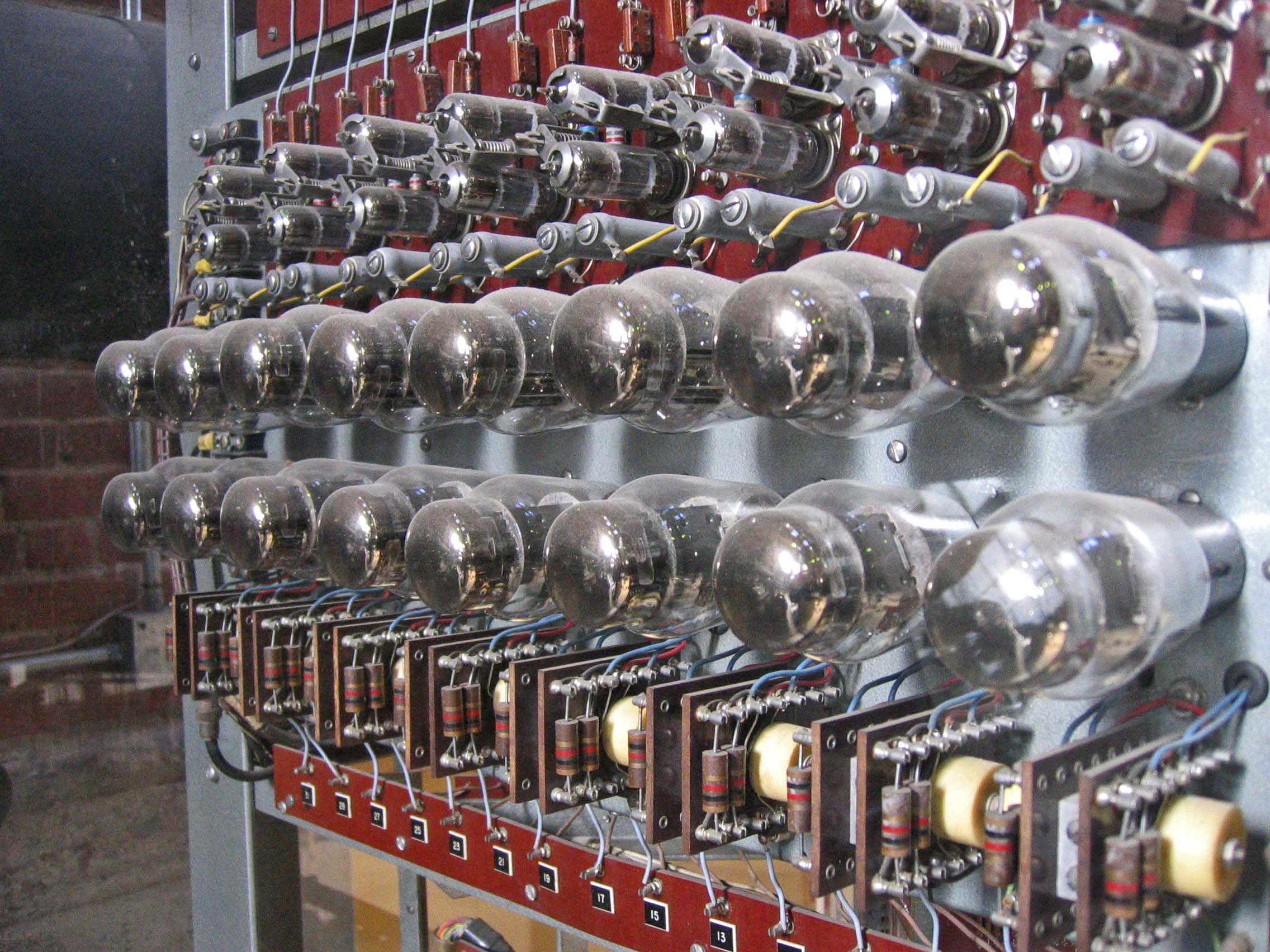 |
|
It could make 5.000 sums per second and it was a thousand times faster than the calculators at that time. Moreover, it made 35 multiplications per second and 3 division or square roots.
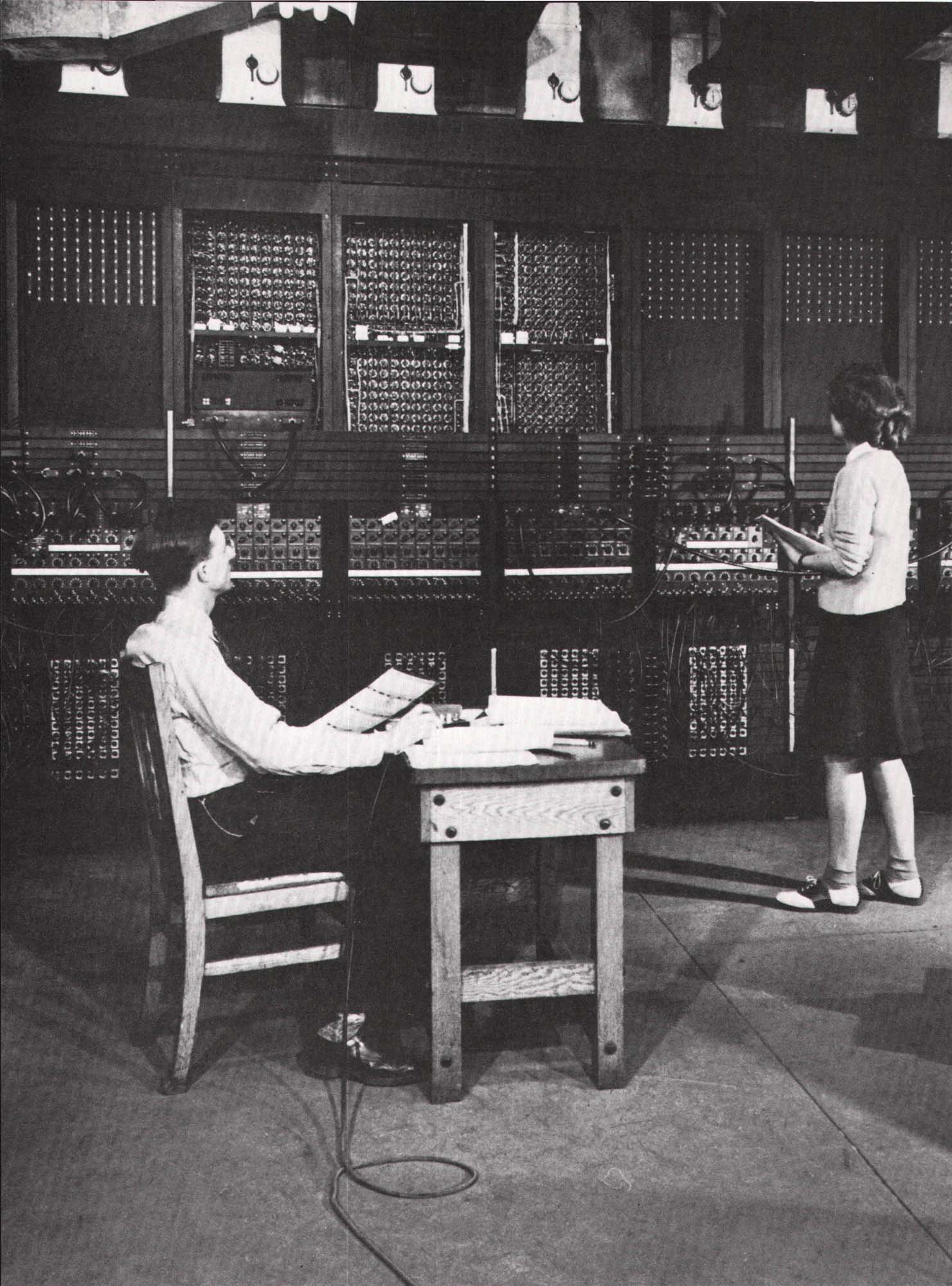 |
|
With the master programmer loops could be repeated, similar to a fixed size FOR. In addition, it could be controlled by a conditional branching or instruction IF. In its aspect it were emphasized accumulators with electrical panels, or Blinken lights watched on the video, and whilst it was calculating it moved from the bottom up, converting the light moving into the image of old computers.
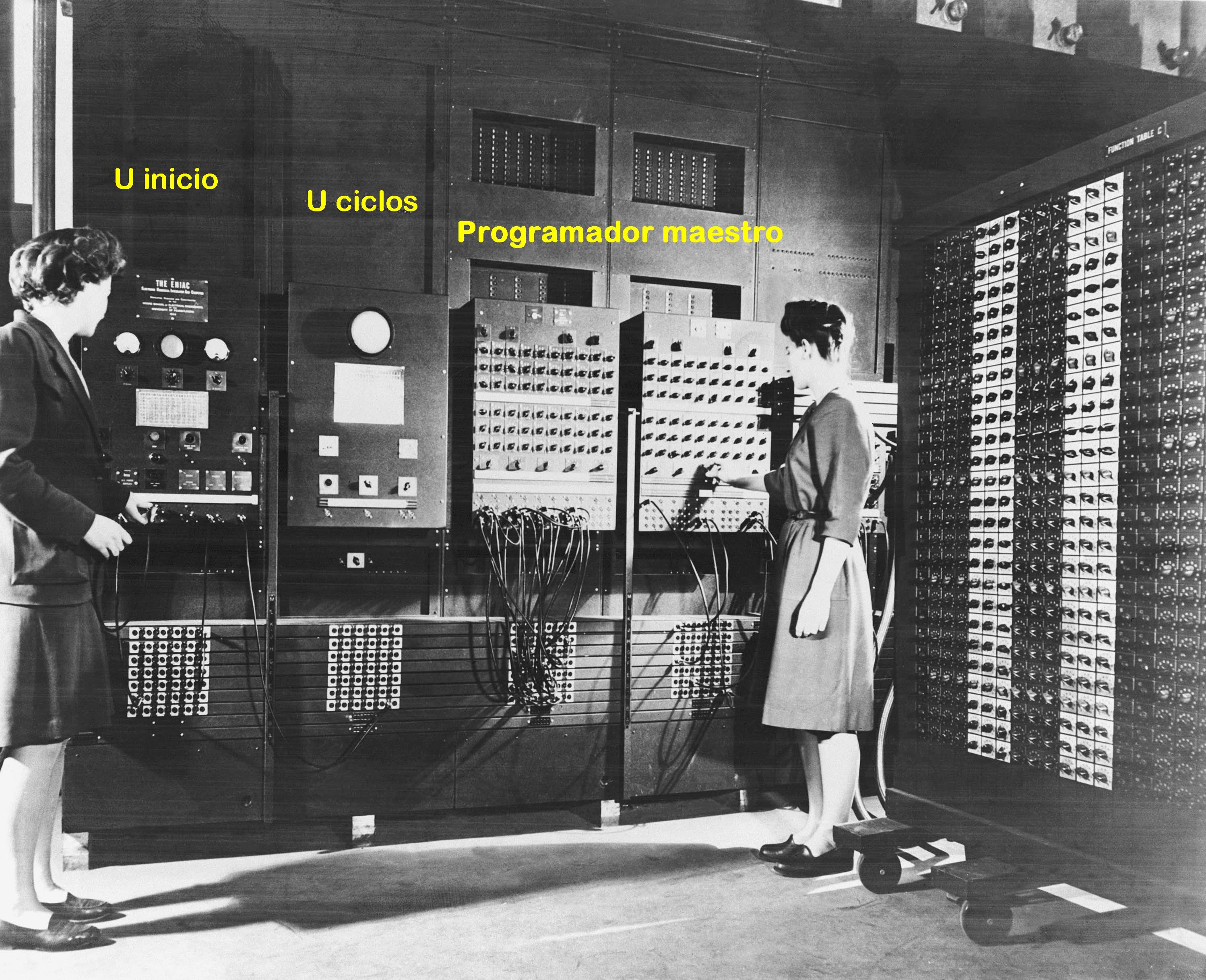 |
|
Basically, the computer solved all the operations making additions and subtractions but for the multiplications it had a table with the results. The accumulators were called that way because they made additions to everything that got to them. As they only could make additions, to make subtractions, they used the negative number. As a curiosity, the square root was made adding odds from number 1. It can be checked with number 9 which is 1+3+5. They are 3 odd therefore the square root of 9 is 3. It is an attribute of the addition of one serie although you have to make a lot of them with bigger numbers.
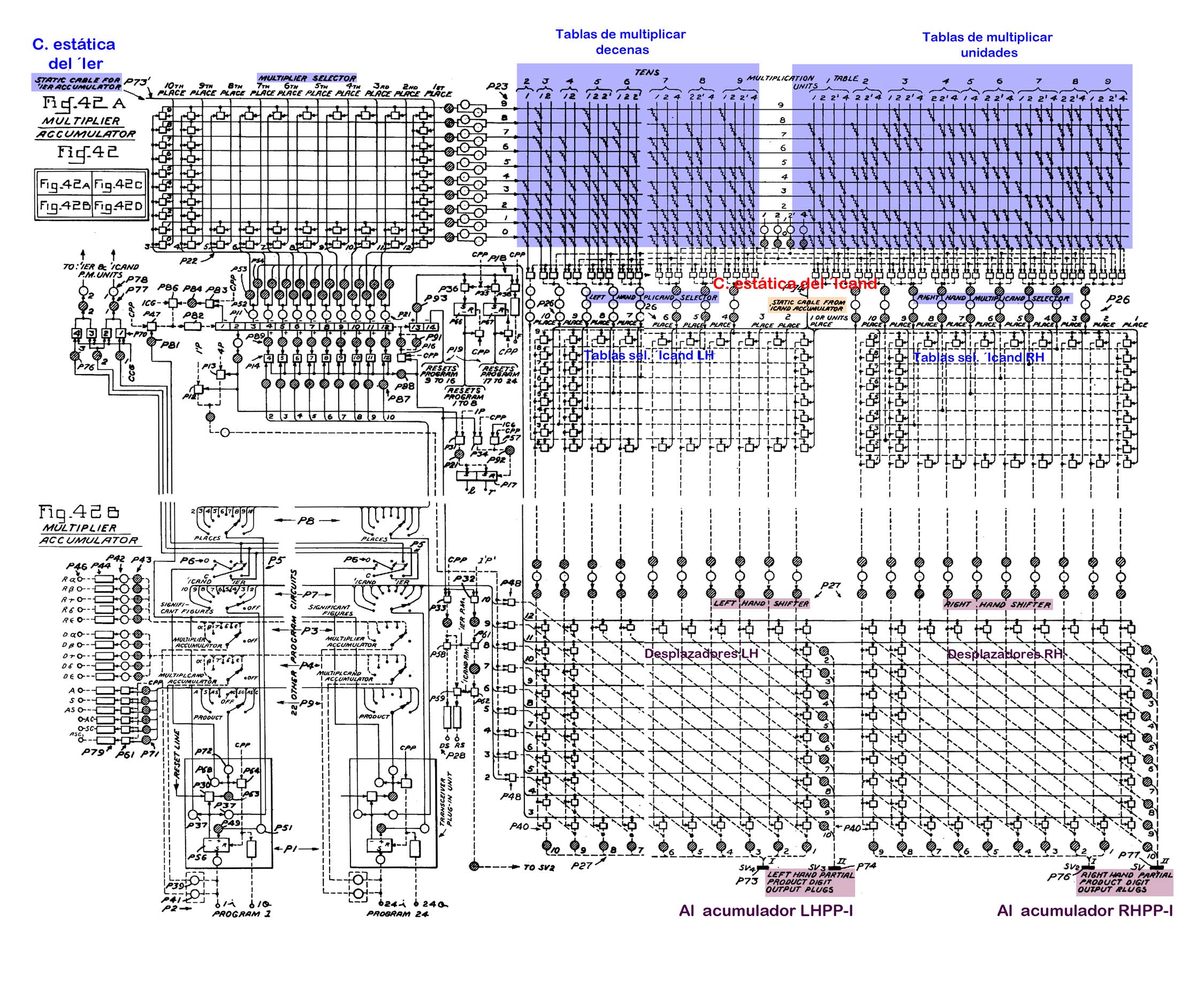 |
|
The ENIAC was managed by 6 programmer women of the ballistic lab of the army. They had to learn how to program from scratch and using a computer which was difficult to handle. It had to be done manually over the machine itself, over the hardware and long and bulky cables had to be connected. Thus, in the first studies, to get the calculations of a 2h work of the ENIAC, it took two weeks of programming the machine, putting cables and switched and checking everything worked fine. The programmers were ignored and their work was not recognized until the 80s.
|
|
|
The ENIAC stopped being active in the 60s and today there is only one replica of the same project. The ENIAC-on-a-Chip had its logic and functioning controlled by a chip and it was developed by the University of Pennsylvania. The other one was a simulator called “eniac.jar” made by Till Zoppke of the University of Berlin. It is one java application that allows programming like the original ENIAC.
 |
|
Thank you very much for your time and I hope you enjoyed the ENIAC.
